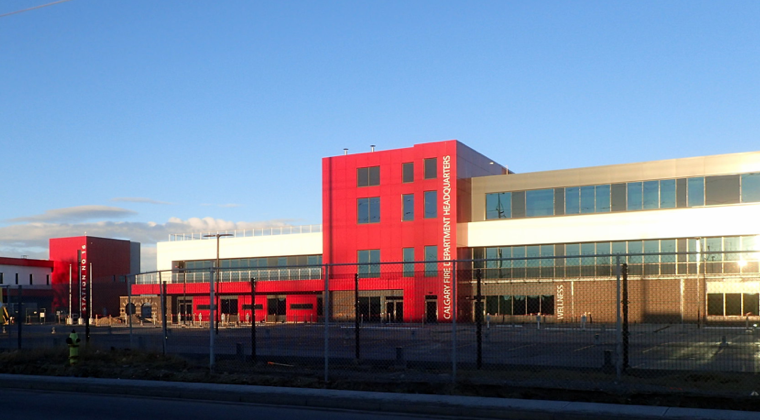RIOS Pivots to the Cloud Without Disrupting How Its Team Works
Egnyte operates behind the scenes to drive advanced, intuitive computational design processes and reduce RIOS’s infrastructure management burden.
RIOS Thrives with Egnyte:
- Preserved their preferred mapped drive experience
- Reduced infrastructure management burden
- Enabled large computational design file management with speed and simplicity

RIOS is an award-winning international design collective actively pursuing wonder within the design of the built environment. Founded in 1985, the collective practices interconnected design across architecture, interiors, landscape architecture, master planning, and placemaking for diverse projects including residential, commercial, civic, hospitality, retail and institutional. RIOS recently opened offices in London, Shanghai and Singapore, and has active projects across the globe.
As RIOS expanded into international markets and adopted a hybrid workplace, technology challenges emerged. However, with the help of Egnyte and a move to the cloud, RIOS was able to provide new capabilities to their design teams without requiring them to learn new workflows. This transition to the cloud gave the firm more flexibility and the ability to scale more efficiently.
Challenge: Manage Growth While Minimizing Tech Burden
While highly skilled in design applications like Revit and Rhino, the team at RIOS are most productive when they can prioritize their design processes and outcomes rather than navigating the underlying technology that facilitates it. “We were managing a data center in our own building, as well as all the pieces necessary to support it,” explains Matt Richmond, Chief Technology Officer at RIOS. “As we grew, the burden of technology grew with us. First and foremost, we’re designers, so we wanted to free ourselves of that challenge.”
At the same time, after shifting to a hybrid work model and opening several international offices, the company found itself collaborating across large geographical distances. This added a new technology challenge to their growing infrastructure management demands: reliance on virtual private networks. “People in any remote office or working from home could not access critical content unless they used a VPN to connect to our headquarters,” explains Richmond. “But the VPN was practically unusable from a performance perspective.”
The team began searching for a cloud-based platform to relieve them of the demands of maintaining local infrastructure and their reliance on VPNs. Their primary goal: to gain the benefits of cloud software without having to change the way people preferred to work. “The last thing we wanted was to break the file access workflows we had built over years. We wanted people to open their machines and be able to access files through a mapped drive, just like they always have,” Richmond says. “We considered SharePoint, Office 365, even virtualizing our workstations in Azure. None of them offered that familiarity. And the performance was far inferior. Ultimately, we were looking at dealing with technology workarounds that delayed our projects, or switching to a cloud solution that would require losing the simple and familiar mapped drive process for navigating our files and doing our work.”

Solution: Smart Cloud Enablement for a Smooth User Experience
Richmond connected with Egnyte at an AEC industry event, and he saw how Egnyte presented content in a simple and familiar mapped drive environment, fully equipped with cloud functionality—a file server in the cloud. He left the event with a strong sense that Egnyte was an ideal solution to provide the best of both worlds: cloud-enabling the processes for accessing and managing files—thus driving faster, smoother computational design work than their VPN and local servers ever could—without fundamentally changing those processes from the user perspective.
Egnyte’s platform benefits the RIOS team across multiple fronts:
- Familiar navigation
“Navigating and accessing files in Egnyte mirrors, to a tee, the way we’ve accessed our files for years,” Richmond explains. “And it’s all in the cloud. Users who log into Egnyte work out of the same drive, no matter where they’re located.” When someone updates a file, their updates are saved automatically and propagate across the drive, with version control facilitating any necessary data restoration. “People used to have to work locally on files, which meant downloading them to their hard drives, making their changes, and reuploading them. These included Adobe files of multiple gigabytes—the re-upload often took hours,” says Richmond. “Now those changes happen within Egnyte, and much faster.”
- Centralizing user content and updates
Automatic updates occur not just with files, but with the code the team uses to run their tools. As Bob Frederick, Director of Computational Design at RIOS, explains: “Most of our tools are written in Python, and having all our Python code sitting on mapped drives lets us manage it in a much more centralized way. When we push a software update, the updated version of the code base propagates across the drive. Our computational designers don’t have to reinstall anything—they can click the same button, in the same place they’ve always found it, and run the latest version.”
- Managing AI-generated imagery
RIOS uses a Stable Diffusion AI server to generate computational design images, and exports those images directly into Egnyte, effortlessly creating an easily accessible image gallery. “The images are stored similarly to how they would be in a Windows server, but the performance is much better,” Richmond explains. “With a large Windows directory of high-resolution image files, those images can take minutes to load. With Egnyte, it’s instantaneous. The team was shocked at how fast it was—some even described it as magic.”
Benefits: A Comfortable and Productive Team, Free of Distractions
Between the fast-paced scaling of the business and sharing and accessing content remotely, RIOS felt they had lost the ability to work the way they wanted: with a focus on quality design rather than technological administration. Since implementing Egnyte, they feel they’ve gotten it all back.
“The challenges we encountered during our international expansion and embrace of hybrid working encouraged us to identify a better technology partner,” says Richmond. “Egnyte brought us back to a more streamlined way of working. We can now complete tasks as quickly as we could when we were all physically together, instead of working around hurdles like learning a new file navigation system, downloading and reuploading content, or managing different local servers.”
Summing up the ways RIOS has benefitted from Egnyte, Frederick adds: “With Egnyte, we get the file server experience we’ve had for the last decade, with all the modern features of a cloud platform. If you’re running a suite of CAD tools and managing lots of computational design files across multiple locations, and don’t want to spend all your energy managing infrastructure and learning new processes instead of advancing your projects, Egnyte is for you.”
With their preferred workflows restored and their technology infrastructure fully optimized, RIOS’s journey with Egnyte is just beginning. “I’d love to make greater use of Egnyte’s web interface, Microsoft Teams integration, and external sharing functionality,” comments Richmond. “Egnyte has worked so well for us that we’re headed in that direction. It’s the one thing our teams across the globe are connected to and can always count on.”
At a Glance
Industry
Architecture, Engineering, and Construction
Location
Los Angeles, CA
Number of Employees
280
Egnyte Products
Platform Enterprise Lite
Learn More

